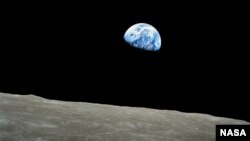Since the universe is so huge, most astronomers think that there must be a planet, somewhere out there, similar to Earth. But a computer model created at Sweden’s Uppsala University says that our planet may in fact be the only one supporting life.
Astrophysicist Erik Zackrisson combined all human knowledge about how the universe was created, from the Big Bang to the present, and fed it to a powerful computer. The machine came up with a concrete number of what we already knew. There are about 700 quintillion planets, or 7 followed by 20 zeros.
The unexpected by-product of the calculation was that Earth may be unique, actually an aberration among myriads of dead, uninhabitable worlds.
Taking into account all known laws of physics and our knowledge about how planets are formed, it looks like that process is capable of producing only planets that cannot sustain life in any form.
Probability suggests that just in our own galaxy, the Milky Way, there must be about 50 billion planets similar to ours. But according to Zackrisson’s model, Earth is a statistical anomaly.
Scientists say that even if further research proves this theory wrong, it is true that the planets like ours are rare and very far between.
The new study was published online and submitted to The Astrophysical Journal.





